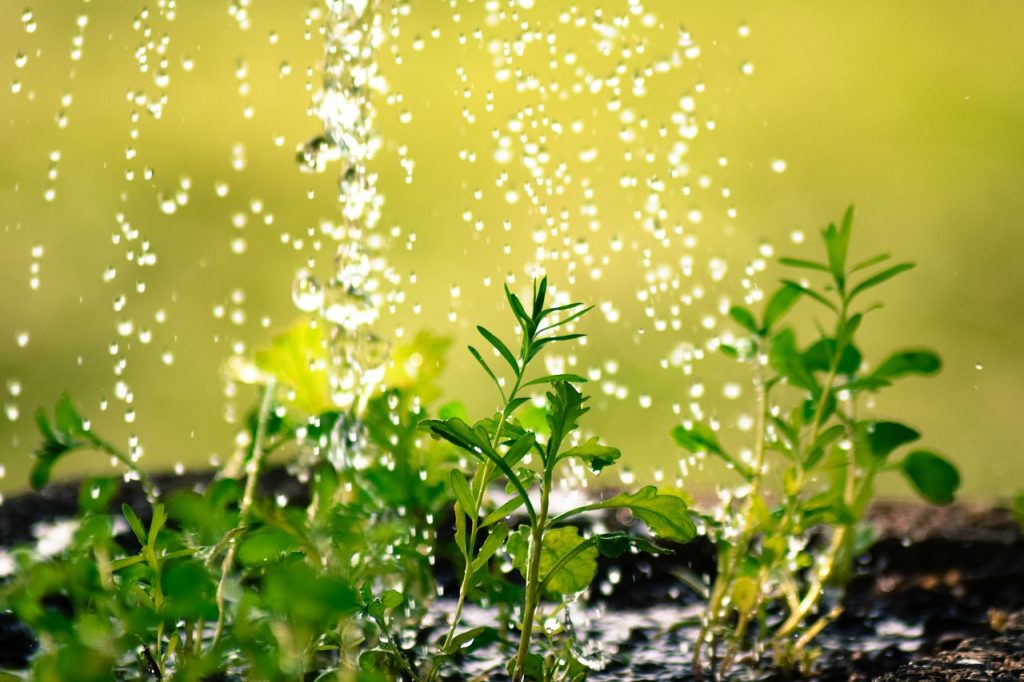The purpose of a rain garden is to collect rainwater, but that’s just the first step. Once water has collected, the garden should disperse it to plants and then allow it to drain back into the water table at an ideal rate. Rain gardens can also filter harmful pollutants before letting the water pass back into the ground.
.
Back in the late winter of 2022, there was a look at how rain-gardens can help at several levels:
Compared to a conventional lawn, rain gardens allow for 30% more water to soak into the ground. Rain gardens: slowing water run-off – Vision Group for Sidmouth
A parliamentary report at the time mentioned rain gardens:
These small gardens in a depression are designed to slow water run-off and assist in relieving the pressure on our sewerage system after heavy rainfall. Water quality report: ‘routine pollution in our rivers’ – Vision Group for Sidmouth
Several pieces on what can be done come from the States – for example:
A rain garden is a garden of native shrubs, perennials, and flowers planted in a small depression, which is generally formed on a natural slope. It is designed to temporarily hold and soak in rain water runoff that flows from roofs, driveways, patios or lawns. All About Rain Gardens – What They Are & How to Build One
The VGS has just received some great feedback from the States:
“I was teaching an environmental science lesson to some elementary students the other day, and when they were doing a webquest about water conservation & the water cycle they ended up on the VGS rain gardens webpage (this page here Visionforsidmouth.org/rain-gardens-slowing-water-run-off/ ) They thought I should tell you we were using it and enjoyed learning about rain gardens so thanks =)
“They also decided it would be nice of us to return the favor, so I had them pick out another good page on rain gardens for us to share with you! “A Guide to Rain Gardens” – https://www.elevators.com/utilizing-rainwater-and-gravity-a-guide-to-rain-gardens/
“It has some awesome information on rain gardens and the benefits of utilizing rainwater, so they thought it’d be a helpful link for you to add to your rain gardens page they found… would you be able to? They’d be so proud and I’d love to show them their suggestion =) I could show them tomorrow at our meeting! Thanks so much again and stay safe!!”
Here are a few excerpts from that guide:
Utilizing Rainwater and Gravity: A Guide to Rain Gardens
Rainwater is an abundant source of hydration for plants and animals, and it requires little effort to use. Condensation and gravity do most of the work, so all we need to do is direct the water where it’s needed. A rain garden goes a step beyond simply collecting rainwater and funneling it toward our plants. The purpose of a rain garden is to collect rainwater, but that’s just the first step. Once water has collected, the garden should disperse it to plants and then allow it to drain back into the water table at an ideal rate. Besides permitting controlled absorption of rainwater, rain gardens can also filter harmful pollutants before letting the water pass back into the ground.

How Do Rain Gardens Work?
When rainwater strikes non-porous surfaces like roads, driveways, and roofs, it becomes runoff, which can pick up chemicals on the surface and erode sediment, then carry these substances into storm drains. But when more rainwater is directed toward a rain garden, the water is slowed down and can seep into the ground. Because (gravity) ensures that the water runs downhill, there’s no need for pumps or electric power: The rainwater runs into a depression in the ground, whether natural or artificial. Carefully selected plants make use of the water as it flows into a holding area or pond, where it gathers and slowly drains back into the soil.
- Rain Garden Basics
- How Does a Rain Garden Work?
- What Is a Rain Garden, and Why Is it Important?
- Rain Gardens: A Way to Elevate Water Quality
Utilizing Rainwater and Gravity: A Guide to Rain Gardens – Elevators In The News
With huge thanks to our friends across the Pond!